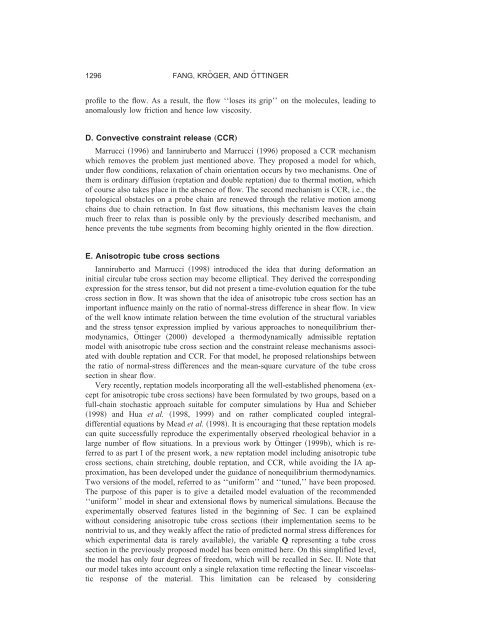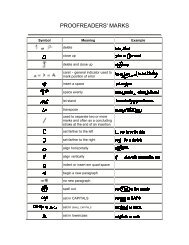View - Martin Kröger - ETH Zürich
View - Martin Kröger - ETH Zürich
View - Martin Kröger - ETH Zürich
Create successful ePaper yourself
Turn your PDF publications into a flip-book with our unique Google optimized e-Paper software.
1296 FANG, KRÖGER, AND ÖTTINGER<br />
profile to the flow. As a result, the flow ‘‘loses its grip’’ on the molecules, leading to<br />
anomalously low friction and hence low viscosity.<br />
D. Convective constraint release „CCR…<br />
Marrucci 1996 and Ianniruberto and Marrucci 1996 proposed a CCR mechanism<br />
which removes the problem just mentioned above. They proposed a model for which,<br />
under flow conditions, relaxation of chain orientation occurs by two mechanisms. One of<br />
them is ordinary diffusion reptation and double reptation due to thermal motion, which<br />
of course also takes place in the absence of flow. The second mechanism is CCR, i.e., the<br />
topological obstacles on a probe chain are renewed through the relative motion among<br />
chains due to chain retraction. In fast flow situations, this mechanism leaves the chain<br />
much freer to relax than is possible only by the previously described mechanism, and<br />
hence prevents the tube segments from becoming highly oriented in the flow direction.<br />
E. Anisotropic tube cross sections<br />
Ianniruberto and Marrucci 1998 introduced the idea that during deformation an<br />
initial circular tube cross section may become elliptical. They derived the corresponding<br />
expression for the stress tensor, but did not present a time-evolution equation for the tube<br />
cross section in flow. It was shown that the idea of anisotropic tube cross section has an<br />
important influence mainly on the ratio of normal-stress difference in shear flow. In view<br />
of the well know intimate relation between the time evolution of the structural variables<br />
and the stress tensor expression implied by various approaches to nonequilibrium thermodynamics,<br />
Öttinger 2000 developed a thermodynamically admissible reptation<br />
model with anisotropic tube cross section and the constraint release mechanisms associated<br />
with double reptation and CCR. For that model, he proposed relationships between<br />
the ratio of normal-stress differences and the mean-square curvature of the tube cross<br />
section in shear flow.<br />
Very recently, reptation models incorporating all the well-established phenomena except<br />
for anisotropic tube cross sections have been formulated by two groups, based on a<br />
full-chain stochastic approach suitable for computer simulations by Hua and Schieber<br />
1998 and Hua et al. 1998, 1999 and on rather complicated coupled integraldifferential<br />
equations by Mead et al. 1998. It is encouraging that these reptation models<br />
can quite successfully reproduce the experimentally observed rheological behavior in a<br />
large number of flow situations. In a previous work by Öttinger 1999b, which is referred<br />
to as part I of the present work, a new reptation model including anisotropic tube<br />
cross sections, chain stretching, double reptation, and CCR, while avoiding the IA approximation,<br />
has been developed under the guidance of nonequilibrium thermodynamics.<br />
Two versions of the model, referred to as ‘‘uniform’’ and ‘‘tuned,’’ have been proposed.<br />
The purpose of this paper is to give a detailed model evaluation of the recommended<br />
‘‘uniform’’ model in shear and extensional flows by numerical simulations. Because the<br />
experimentally observed features listed in the beginning of Sec. I can be explained<br />
without considering anisotropic tube cross sections their implementation seems to be<br />
nontrivial to us, and they weakly affect the ratio of predicted normal stress differences for<br />
which experimental data is rarely available, the variable Q representing a tube cross<br />
section in the previously proposed model has been omitted here. On this simplified level,<br />
the model has only four degrees of freedom, which will be recalled in Sec. II. Note that<br />
our model takes into account only a single relaxation time reflecting the linear viscoelastic<br />
response of the material. This limitation can be released by considering





